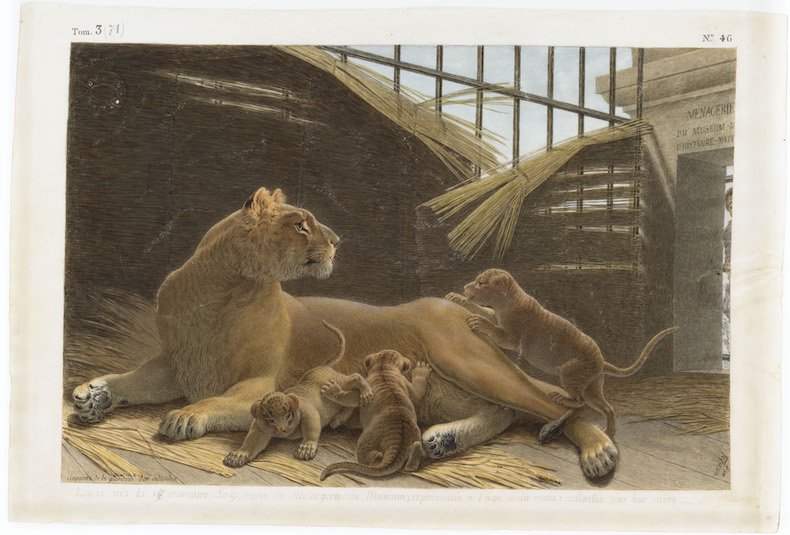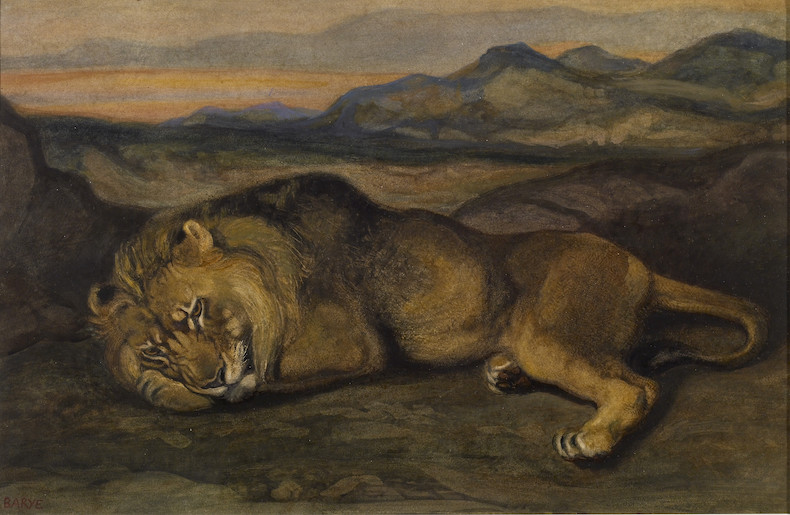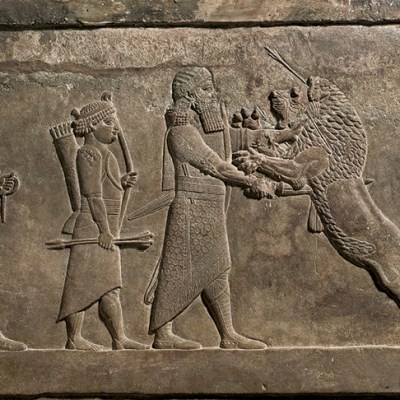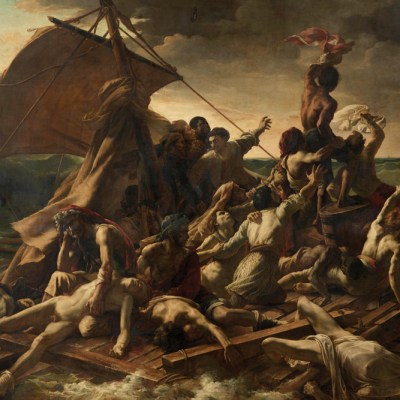From the February 2024 issue of Apollo. Preview and subscribe here.
Katie Hornstein’s new study of lions in 19th-century France arises from two paradoxes. First, that the proliferation of lions in art, their ‘staggering visibility’ as subjects for painters, sculptors and photographers, was inseparable from their disappearance in the wild. Second, that the aspiration to depict these creatures as faithfully as possible, without human projection or interference, was itself predicated on the access to wild animals provided by zoos and commercial spectacles. Hornstein documents both the experience of actual lions, pointedly individualised in her account, and the cultural fantasies produced by the encounter with such lions in the contrived and often cramped conditions of modern spectatorship. The result is a penetrating and often uncomfortable analysis of the price paid by animals for humans’ desire for proximity with them. Through five case studies, Hornstein exposes ‘a direct link between the ecological crisis facing wild lions and their circulation as visual representations and figures of French colonial desire’.

The ‘animal turn’ is in the ascendant in art history today, as witnessed in the renewed attention paid to master animaliers such as Edwin Landseer and Rosa Bonheur (both discussed here). Hornstein argues that far from being a ‘quaint minor genre’, 19th-century animal painting carried political, philosophical and sexual implications, enmeshed with science, slavery and empire. Her book also upholds the ambition to treat the animals themselves as ‘more active agents of art history’. This is easier said than done and, as she acknowledges, entails a certain amount of speculation and experimental writing, working at the limits of anthropomorphism. There is no escaping the levels of violence and suffering inflicted upon these creatures – although she diligently records their names wherever possible, ‘so we do not forget them’.
Myth and Menagerie begins in 1794, when the incorporation of the royal menagerie into the Jardin des Plantes, the zoological gardens of the Muséum National d’Histoire Naturelle, created a new publicly accessible institution for the study of wild animals. As ‘the most heralded kind of charismatic megafauna’, lions were regarded as essential to the institution’s status and appeal. Two lions from Tunis – called Marc and Constantine – were paraded in triumph through the streets of Paris in 1798, ahead of the cortège of works of art looted from Italy. The pair went on to enjoy a ‘quasi-celebrity status’, enhanced by the fact that Constantine gave birth to a litter of three cubs on the first anniversary of Napoleon’s coup of 18 Brumaire. An exquisitely detailed portrait of the lions by Nicolas Maréchal (whose paintings on vellum did for the animal inhabitants of the Jardin des Plantes what Redouté was doing for the flora) broke ground in capturing their particular identities, rather than treating them as a universal type. Even more fascinating is the group portrait of the lion family by Jean-Baptiste Huet, exhibited at the Salon of 1802. Huet’s decision to endow the lions’ faces with human expressions of feeling (inspired by Charles Le Brun’s drawings, then on show in the Louvre) lent the picture a ‘hallucinatory strangeness’. Considering the long connection between lions and regal authority, it is not far-fetched to detect an echo of earlier representations of the captive Louis XVI and family.
The Lioness Nursing her Cubs Born on 18 Brumaire, Year 9, at the Age of One Month (1801), Nicolas Maréchal. Muséum national d’histoire naturelle. Photo: Tony Querrec (RMN)

The opportunity to view lions at the Jardin des Plantes inspired divergent responses among artists in the Romantic period. For Théodore Géricault, who popped over to view the lions while receiving treatment for mental illness, the lion possessed a haunting interiority; his sensitive, close-up profile of a lioness from c. 1819 captures ‘an individual with psychological depth’. Antoine-Louis Barye and Eugène Delacroix were instead drawn to attend a lion dissection in 1829. Barye made a cast of a dead lion after it was skinned, while Delacroix produced exercises in ‘artistic reanimation’, a series of pencil sketches in which he restored to the cadavers the movement and postures they would have possessed while alive, seeking to understand the creatures ‘from the inside out’.
Hornstein’s account of the plight of lions brought to Paris after the colonisation of Algeria is deeply affecting. In 1838 and 1839, 5,448 lions, hyenas and panthers were imported to France, the number rising to 7,970 in 1840: a ‘staggering amount of animal life’ being taken out of Africa. Typically presented as trophies by colonial officers, in the Jardin des Plantes these captured lions tended to survive only for a couple of years, or even a few months, their suffering amplified by constant surveillance. Meanwhile, encouraged by a bounty imposed by General Bugeaud in 1844, the Barbary lion was hunted to the point of extinction. An ardent colonialist, Horace Vernet in Lion Hunt (1836) recorded how hunters used cubs as a lure to draw out and kill their mother. Hornstein is alert to the discrepancy between the supposed heroism of combat with lions, immortalised by antiquity and by Rubens, and its depressing modern manifestations. In this vein she interprets Édouard Manet’s 1881 portrait of the gout-ridden lion hunter Eugène Pertuiset as a commentary on the degraded nature of hunting in the industrial era.
Large Lion (early 1830s), Antoine-Louis Barye. Walters Art Museum, Baltimore

Myth and Menagerie illuminates how multiple forms of 19th-century visual culture were entangled not just with particular lions, but with hunters, lion tamers (dompteurs) and practices of taxidermy. While artists fed the myth of the lion in a state of nature, Hornstein restores the coercion and the cages which made the myth possible, with the aid of rare sources such as the fin-de-siècle photographic archive by Gustave Soury. It is a brilliant but also sobering analysis of the images produced by and around a ‘man-made ecological disaster’. It is also an intensely personal book, inflected by the enforced captivity of Covid and the death of the author’s beloved tuxedo cat Myszka, as well as that of her own mother. The book is dedicated to both, ‘in that order’.
Myth and Menagerie: Seeing Lions in the Nineteenth Century by Katie Hornstein is published by Yale University Press.
From the February 2024 issue of Apollo. Preview and subscribe here.



